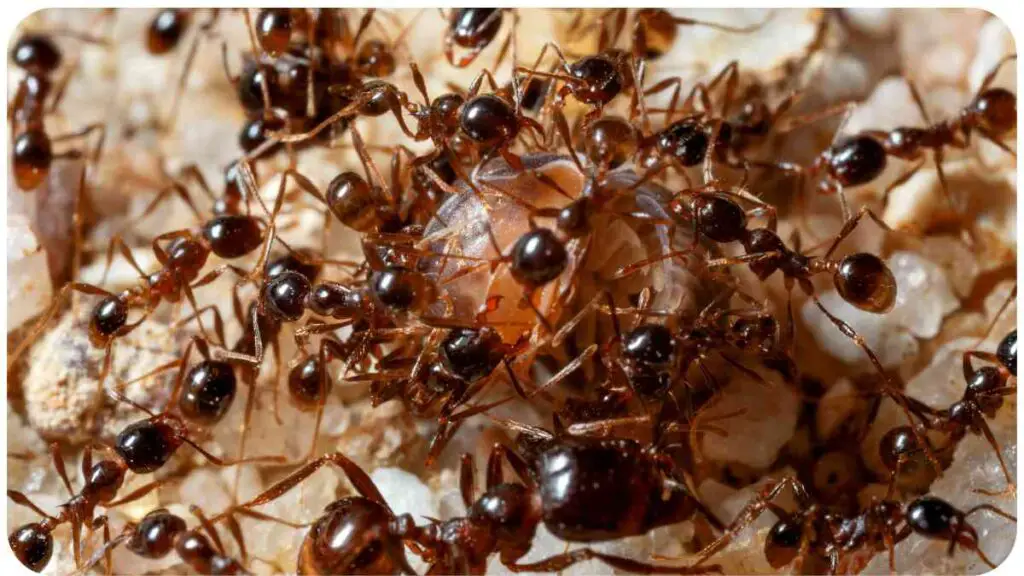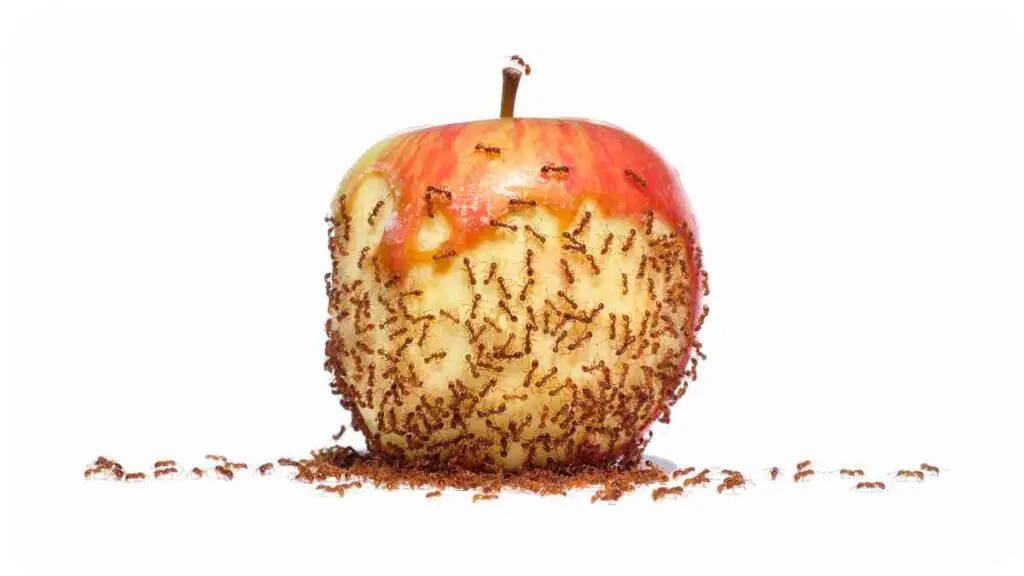Welcome to our comprehensive guide on dealing with one of homeowners’ nightmares: Carpenter Ants. These tiny yet destructive insects have the potential to wreak havoc on your home’s structural integrity. But fear not, as we’re here to equip you with the knowledge and expertise you need to identify and address structural damage caused by carpenter ants.
In this article, we’ll delve into the intricacies of carpenter ants, explore the signs of infestation, discuss the problems they pose, and provide practical solutions for both DIY enthusiasts and those seeking professional assistance. Throughout, we’ll share personal experiences and insights gained from years of dealing with these pests in the field.
So, let’s roll up our sleeves and start by understanding these unwanted guests.
| Takeaways |
| – Carpenter ants can be destructive to your home’s structural integrity. |
| – Identifying early signs of infestation is crucial to preventing extensive damage. |
| – Professional inspection and assessment are recommended for accurate solutions. |
| – Preventing carpenter ant infestations involves addressing moisture and entry points. |
| – Repairing structural damage should be done promptly to maintain your home’s safety. |
| – Regular maintenance and vigilance are essential for long-term prevention. |
2. Understanding Carpenter Ants

Carpenter ants may look innocuous, but they are masters of destruction. To effectively combat them, we need to know our enemy.
Ants play a crucial role in ecosystems, acting as environmental caretakers. Contrary to common belief, not all ants are pests. Understanding their significance in biodiversity enhances pest management strategies.
2.1. Anatomy and Behavior
Carpenter ants are typically larger than your average ant and are often black or reddish-brown. They have segmented bodies and powerful mandibles used for tunneling through wood. Understanding their anatomy helps in identification.
2.2. Habitat and Nesting
These pests make nests inside wood, which is where they lay their eggs and raise their young. Learning about their nesting habits is crucial to addressing the root of the problem.
Effective garden management involves balancing pest control with biodiversity. Discover tips for managing ants in your garden. Maintaining harmony between plants and pests ensures a thriving and diverse garden environment.
3. Signs of Carpenter Ant Infestation
Recognizing the presence of carpenter ants in your home is crucial to mitigating potential damage. Here are some telltale signs to watch out for:
3.1. Visual Clues
- Ant Sightings: Spotting large ants, especially during the evening or early morning, could be a sign of carpenter ant activity.
- Winged Ants: Winged ants emerging from your walls or ceilings indicate the presence of a mature colony.
3.2. Auditory Clues
- Rustling Noises: Listen for faint rustling sounds coming from within your walls, which may indicate tunneling activity.
3.3. Sawdust and Frass
- Frass Deposits: Carpenter ants leave behind frass, which resembles fine wood shavings, near their entry points.
- Sawdust Accumulation: Keep an eye out for sawdust piles, a byproduct of their excavation, near damaged wood.
Dealing with ants in the kitchen can be challenging. Explore effective tips for eradicating ants from your food storage areas. Learn to safeguard your kitchen against these persistent invaders.
3.4. Structural Damage
- Weakened Wood: Gently tap wooden surfaces in your home. If they sound hollow or crumble easily, it could be a sign of damage caused by carpenter ants.
Understanding these signs is vital, but it’s equally important to grasp the potential consequences of allowing a carpenter ant infestation to persist.
4. Why Carpenter Ants Are a Problem
Carpenter ants are more than just an annoyance; they can compromise the structural integrity of your home. Here’s why they are a significant concern:
- Wood Damage: Carpenter ants excavate galleries in wood, weakening it over time. This can lead to sagging floors, doors that don’t close properly, and even structural collapse in severe cases.
- Costly Repairs: Ignoring the problem can result in costly repairs down the line, as damaged wood needs to be replaced and structures reinforced.
- Risk of Secondary Issues: Moisture can seep into damaged wood, creating an ideal environment for mold and fungi growth, which can further harm your home and health.
Now that we understand the gravity of the situation, let’s explore how to identify carpenter ants with some DIY methods.
Maintaining a pest-free home is crucial, especially with pets. Discover safe and pet-friendly ant control methods. Safeguard your home without compromising your beloved pets’ well-being.
5. DIY Carpenter Ant Identification
If you suspect a carpenter ant infestation, there are steps you can take to confirm their presence before seeking professional help.
5.1. Bait Stations
Create bait stations with a mixture of sugar and protein (like honey and peanut butter) and place them in areas where you’ve seen ant activity. This will help you identify their preferred food source.
5.2. Sugar and Protein Tests
Observe which bait station the ants are attracted to. Carpenter ants have a preference for sugar or protein, which can give you clues about their nest’s location.
5.3. Listening for Noises
During the quietest hours of the night, place your ear close to suspected infestation areas. If you hear faint rustling or chewing sounds, it’s a strong indicator of carpenter ant activity.
6. Professional Inspection and Assessment
While DIY methods can provide initial confirmation, seeking the expertise of a professional exterminator is crucial for a thorough assessment. Here’s why:
DIY tick repellents are popular, but their effectiveness varies. Explore reasons why your DIY tick repellents might fall short. Enhance your tick prevention strategies with insights into common mistakes and alternative solutions.
6.1. Hiring an Exterminator
- Accurate Identification: Professionals can confirm the type of ant infestation accurately, ensuring you’re not dealing with other species.
- Comprehensive Inspection: They have the experience and tools to inspect your property thoroughly, locating nests and assessing the extent of the infestation.
- Tailored Solutions: Based on their findings, exterminators can recommend the most effective treatment methods, saving you time and money in the long run.
Next, let’s focus on proactive measures you can take to prevent carpenter ant infestations in the first place.
7. Preventing Carpenter Ant Infestations

Prevention is often the best strategy when it comes to carpenter ants. By making your home less inviting, you can avoid future problems.
7.1. Eliminating Moisture Sources
- Fix Leaks: Repair any plumbing or roof leaks promptly to reduce moisture, which attracts carpenter ants.
- Proper Ventilation: Ensure proper ventilation in crawl spaces and attics to minimize humidity.
7.2. Sealing Entry Points
- Seal Cracks: Seal cracks and gaps in your home’s exterior, such as around windows, doors, and foundation.
- Trim Trees and Shrubs: Trim tree branches and shrubs that touch your home, providing potential bridges for ants.
Now that you’ve learned how to prevent infestations let’s explore various techniques for carpenter ant removal.
8. Carpenter Ant Removal Techniques
Whether you’re a DIY enthusiast or prefer professional intervention, there are multiple approaches to consider.
8.1. Non-Toxic Approaches
- Vacuuming: Use a vacuum with a hose attachment to physically remove ants and frass.
- Diatomaceous Earth: This natural substance can be applied in areas of ant activity to dehydrate and kill them.
8.2. Chemical Treatments
- Ant Baits: Place ant baits near foraging trails to eliminate the entire colony. Be patient; it takes time to work.
- Insecticides: Professional exterminators may use specialized insecticides that are highly effective against carpenter ants.
As we address carpenter ant removal, it’s essential to consider the aftermath – repairing the structural damage they’ve caused.
9. Repairing Structural Damage
Once you’ve successfully eliminated the carpenter ant colony, it’s time to assess and repair any structural damage that may have occurred.
9.1. Assessing the Extent
- Thorough Inspection: Carefully examine the affected areas to determine the extent of the damage. This might involve removing damaged wood to reveal the full scope.
- Consult Professionals: If you’re unsure about the extent or how to proceed, consult a contractor or structural engineer for expert guidance.
9.2. Replacing Damaged Wood
- Remove Affected Wood: Cut out and remove the sections of wood that have been compromised by carpenter ants. Make sure to dispose of it properly.
- Install New Wood: Replace the removed wood with new, treated lumber that is resistant to future infestations.
9.3. Reinforcing Structures
- Add Support: Depending on the severity of the damage, you may need to reinforce the affected structures to ensure long-term stability.
- Seal Entry Points: Seal any entry points where carpenter ants initially gained access to your home to prevent future infestations.
With structural repairs completed, you can now focus on maintaining a carpenter ant-free home.
10. Maintaining a Carpenter Ant-Free Home
Prevention and maintenance go hand in hand when it comes to carpenter ants. Here are some tips for keeping your home pest-free:
- Regular Inspections: Periodically check for signs of carpenter ant activity, especially in vulnerable areas.
- Maintain Proper Ventilation: Continue to address moisture issues by ensuring proper ventilation and resolving leaks promptly.
- Landscaping: Keep trees and shrubs well-trimmed, preventing ant access points.
- Remove Attractants: Eliminate food and water sources inside your home, making it less appealing to pests.
Now, let’s delve into personal experiences and insights from professionals who have battled carpenter ants in the field.
11. Personal Experiences and Insights
As someone with years of experience dealing with carpenter ants, I’ve encountered various challenges and successes. One key takeaway is that early detection and swift action are essential.
In my own work, I’ve found that combining both non-toxic and chemical removal methods can be effective. However, consulting with experts is often the best approach, as they can provide tailored solutions based on the unique circumstances of each infestation.
Furthermore, it’s important to address the root causes of infestations, such as moisture issues, to prevent recurrence.
As we move forward, let’s gather some expert tips for long-term prevention.
12. Expert Tips for Long-Term Prevention
To ensure your home remains carpenter ant-free in the long run, consider these expert recommendations:
- Regular Maintenance: Keep up with routine maintenance tasks, including sealing cracks and monitoring for leaks.
- Trimming Trees and Shrubs: Maintain a safe distance between your home and vegetation to minimize ant access.
- Yearly Inspections: Consider annual professional inspections to catch potential infestations before they become a significant problem.
- Educate Yourself: Stay informed about carpenter ants and their habits, empowering you to identify issues early.
Now, let’s look at industry-recognized solutions and products that can assist in carpenter ant management.
13. Industry-Recognized Solutions
Several reputable products and solutions are recognized within the industry for carpenter ant management. These include:
- Ant Baits: Brands like Terro and Advance offer effective bait stations that can be used for DIY ant control.
- Professional Exterminators: Established pest control companies like Orkin and Terminix have a track record of successfully addressing carpenter ant infestations.
- Wood Preservatives: Products like Boracare can be applied to prevent carpenter ant damage to wooden structures.
In conclusion, dealing with carpenter ants requires knowledge, swift action, and a combination of DIY and professional strategies. By following the steps outlined in this guide and remaining vigilant, you can protect your home from these destructive pests.
14. Conclusion
In this comprehensive guide, we’ve explored the world of carpenter ants, from understanding their behavior and identifying signs of infestation to DIY solutions and professional assistance. We’ve discussed prevention, repair, maintenance, personal experiences, expert tips, and industry-recognized solutions.
Remember, carpenter ant management is not a one-time task; it requires ongoing attention to keep your home safe and structurally sound. By applying the knowledge and strategies presented here, you can confidently address carpenter ant infestations and maintain a pest-free environment.
Thank you for joining us on this journey, and may your home remain free of carpenter ant troubles.
Further Reading
- Yale Pest Control: Carpenter Ants – Where Can They Be Found and How to Get Rid of Them
- Discover the habits and habitats of carpenter ants and learn effective methods for eliminating them from your home.
- Mast-Producing Trees: Identifying and Addressing Wood Damage Caused by Carpenter Ants and Termites
- Explore insights into recognizing wood damage inflicted by carpenter ants and termites, along with strategies for addressing it.
- University of Minnesota Extension: Carpenter Ants
- Gain valuable information on carpenter ants, their behavior, and effective control measures through this comprehensive resource.
FAQs
How can I tell if I have a carpenter ant infestation?
Carpenter ant infestations are often indicated by the presence of large ants, especially during nighttime, and the discovery of sawdust-like frass near wooden structures.
Are carpenter ants harmful to humans?
While carpenter ants are not directly harmful to humans, they can cause extensive damage to wooden structures in homes, potentially leading to costly repairs.
What is the difference between carpenter ants and termites?
Carpenter ants excavate wood to build their nests, leaving behind galleries, while termites consume wood. The damage caused by the two pests differs in appearance.
How can I prevent future carpenter ant infestations?
Preventing carpenter ant infestations involves addressing moisture issues, sealing entry points, and maintaining proper ventilation in your home.
When should I seek professional help for carpenter ant control?
If you suspect a carpenter ant infestation or the problem seems beyond your control, it’s advisable to consult with a professional exterminator who can assess the situation and provide effective solutions.

Hello! I’m Hellen James, and I write about how to keep pests from invading your home. For the last 10 years, I’ve been working in pest control and am excited to share my expertise with you!


